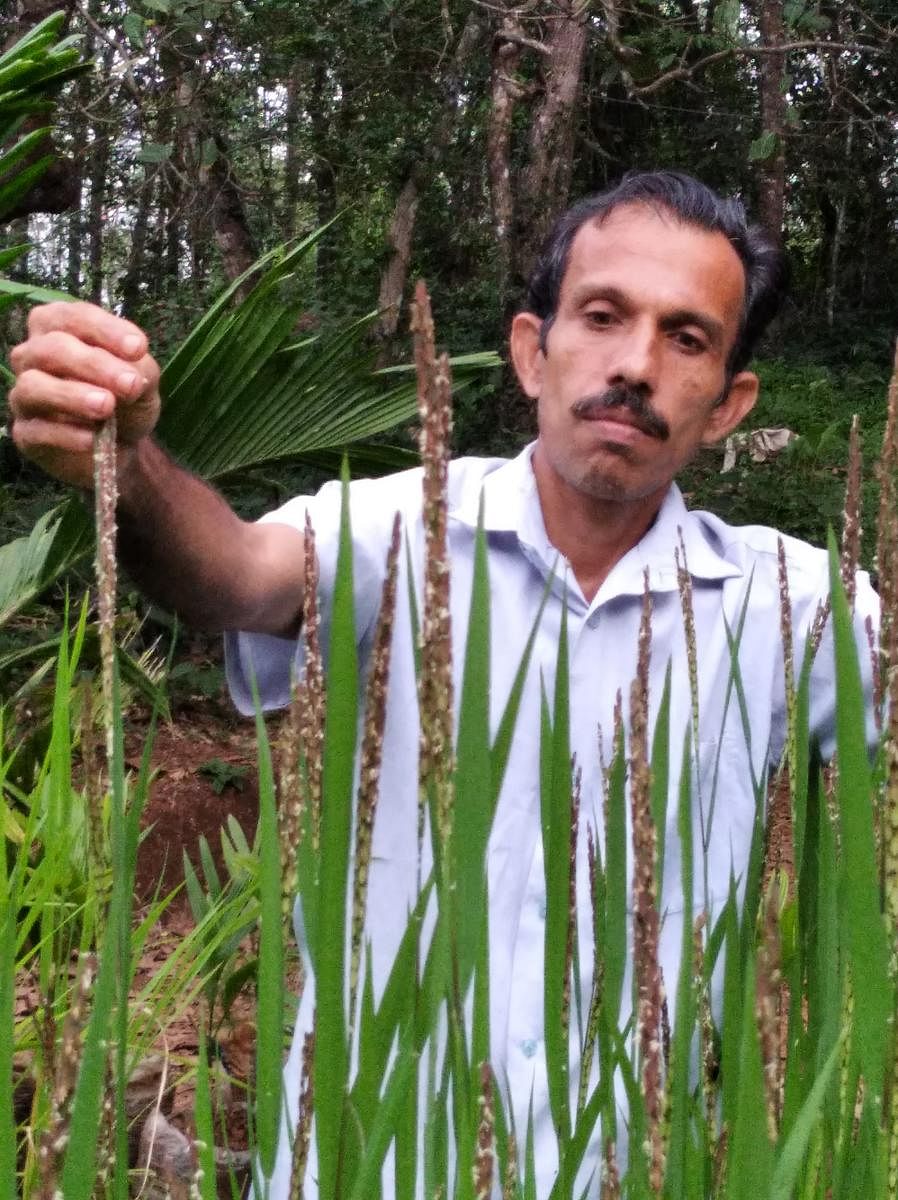Saving heirloom paddy varieties




An innovative effort in conserving various varieties of traditional rice seeds in Kasargod has its roots in Karnataka.
Satyanarayana Beleri, a farmer from Kasargod district of Kerala has five acres of land, where he grows rubber as the main crop with spices as intercrops. In spite of his land not being suitable for paddy cultivation due to its undulating terrain, he has been able to preserve around 200 traditional paddy varieties.
Conserving landraces in field gene bank is a cumbersome process — it requires an investment of space, time, labour, and energy without adequate monetary returns. However, Beleri’s passion to conserve indigenous paddy varieties led him to innovate.
His method requires less effort and resources and as many as 200 landraces can be conserved in an area of 200 square metre.
More than a decade ago, Beleri had bought a handful of traditional Rajakayame paddy seeds from pioneering organic farmer Cherkady Ramachandra Rao in Udupi district, Karnataka.
Innovative method
In Beleri’s method, 10-20 seeds of each paddy variety are sown in different paper cups filled with pot mixture and are labeled accordingly. Optimum moisture is maintained in the cups to ensure the germination of seeds.
The seeds sprout in three to four days, the moisture is maintained at the right level for the new saplings to grow till the tenth day. After 10 days, these seedlings in each paper cup are transplanted to polybags filled with compost mixture and are placed close by, in an open space with sunlight.
Until flowering, the seedlings are watered and nutrients are provided through the application of 100 ml of ‘Jeevamrutha’ each week.
After flowering begins, each polybag is shifted to a shallow water pond covered by a tarpaulin sheet and protected by a bird net. This water pond and the net help protect the seeds from birds and rats.
While transplanting the crops, care is taken to avoid cross-pollination by keeping varieties with the same date of flowering in distant places inside the pond.
Collection of seeds
Different varieties are harvested separately, sun-dried and then stored in paper bags.
Close to 150 grams of pure seeds can be obtained from each polybag and are used for the next sowing season.
Beleri travels across Karnataka, Kerala and Tamil Nadu to collect traditional seeds. Though he does not have a huge quantity of seeds to give farmers, one can obtain sample seeds from him.
Important varieties in his collections are Chitteni, Aktikaaya, Narikela, Suggi kayame, Vellattuven, Gandhasaale, Jeerige Sanna, Ghangadale, Kumkumasaale, Kalame, Kottambarasaale, Karigajavile, Raaja Mudi, Jugal, Kagga, Karijeddu, Parambu ucchan, mysooru mallige.
Along with traditional varieties of paddy, he is also conserving important traditional varieties of nutmeg, pepper, jack and mango. Further, he is an apiarist and has the skill to graft horticulture crops.
(For more details, contact Satyanarayana Beleri on +91 9400650000)